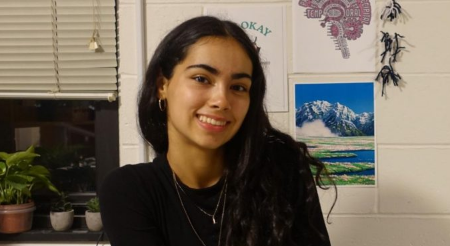The population at South High has been growing. Some class sizes have increased, and the hallways might be more crowded. Students might even have a harder time finding a seat at lunch.
Currently, all class sizes at South are above 400: in early December, seniors numbered at 418, juniors at 415, sophomores at 435, and freshmen at 426, according to Guidance Department Head Ms. Potenti. Compared with last year’s senior class size of 305, the increase is evident.
Enrollment “is currently as high as it’s ever been in South High history,” said Assistant Principal Ms. Papadopoulos, and the average size of an individual classroom is 27 students.
In early December, there were around 1700 students at South. This number is subject to change; earlier in the year, the population was 1730. The stated building capacity is 1700. However, Ms. Papadopoulos explained that it is not uncommon for schools to be above capacity.
Part of South’s population increase is due to larger graduating classes at Sullivan Middle School. Most of those students will enroll at South as freshmen the following year. However, the population at South increases all year and this is due to a number of factors. Some students move into the South quadrant from other parts of the city or state; others receive special permission to attend, because they live out of district.
Furthermore, many new students at South come from other countries, including Brazil and many Spanish-speaking countries. Generally, there are larger population influxes to South before the school year begins, as well as in December and February, said Ms. Potenti. In other parts of the world, including many places in the Southern Hemisphere, the school year ends between December and February—therefore, more students and their families might immigrate to the US at this time.
South has enrolled over 300 new students this year, as of early December. It is expected that this number will continue to grow, likely surpassing last year’s new enrollment total of 334 students, Ms. Potenti explained.
Transfer Students
Aside from international transfers, some new students transfer to South because they have moved into the district from elsewhere in the state or country. Additionally, some students receive special permission from Mr. Creamer or the WPS Executive Director of the South Quadrant, Timothy Sippel, to attend South despite living outside the district. However, Ms. Potenti thought this constituted a small percentage of new enrollments.
Aidan Le ‘25 transferred to South from Shrewsbury High School at the beginning of this school year. “I decided to move here because it’s more diverse,” he said.
Le, who is Vietnamese, finds that at South, “there’s a lot more diversity, and a lot more people like me, and that makes it a lot easier to get along with people.” Le still lives in Shrewsbury; he received special permission to attend South.
“Doubling Up”
In addition to transfers from other districts like Le, some students attend South because they are “doubling up” with another family in the South district.
“[Some] people can’t afford to live on their own,” Ms. Potenti explained. “So families will ‘double up’ or live together to save money—or not even to save money, but to be able to survive and live.”
Ultimately, in “doubled up” situations, there can be more students in a household than expected. And overall, if there are more families living in a household, this will lead to more students enrolling at South.
Immigration
Most of the population increase at South, however, results from families immigrating to Worcester from other countries. Many families and students feel they will have better economic opportunities and a safer life in the United States.
As a guidance counselor, Ms. Potenti’s job is to place new students in classes. This can be difficult, she explained, depending on whether the student’s credits will transfer to South. “Sometimes they weren’t in school, or sometimes they can’t access [their grades or transcript] depending on. . . [the] country they came from,” she said. So, if students arrive in the middle of the year, they might need to audit most of their classes, meaning that though they attend class, they can’t receive credit for it. The following year, they would be placed back in the same grade—this time for credit. However, this doesn’t happen often; most of the time, “if they have been in school, they do come with grades.”
There is a wide diversity of backgrounds at South; students at South come from a variety of places in Latin and South America, the Caribbean, Africa, and Asia. In particular, Ms. Potenti estimated that, at the moment, 1 in 5 new students at South come from Brazil.
Every student’s experience with immigrating to Worcester and attending South is different. However, some of these students expressed frustration with the school.
Bernardo Pena dos Santos ‘26 and Valentina Barreto ‘24 wished that South were better able to assist students who are immigrants. Sometimes, they feel that they and their peers are unsupported by the school—teachers and administration might not appreciate difficulties in their lives, and sometimes it feels hard to participate in clubs and sports, as well. They want South to be more inclusive towards non-English speakers, and to recognize and help students with unique and challenging experiences. Read more about their stories here.
Belonging at South
Despite the challenges of a growing student body, Ms. Papadopoulos views South’s increasing population as positive. “The more the merrier,” she said.
“[Students] have to go to school,” expressed Ms. Potenti. “We’re just going to continue to be a welcoming place.”
However, Barreto and Dos Santos’ concerns about South’s community and environment are still present.
As South’s student body grows, the diverse experiences of students will expand, and students will continue to desire recognition. Within an increasing population, perhaps there will be room to create shared spaces, express important experiences, and overall strengthen the community at school.
“The more students we can help, the better,” said Ms. Papadopoulos.







